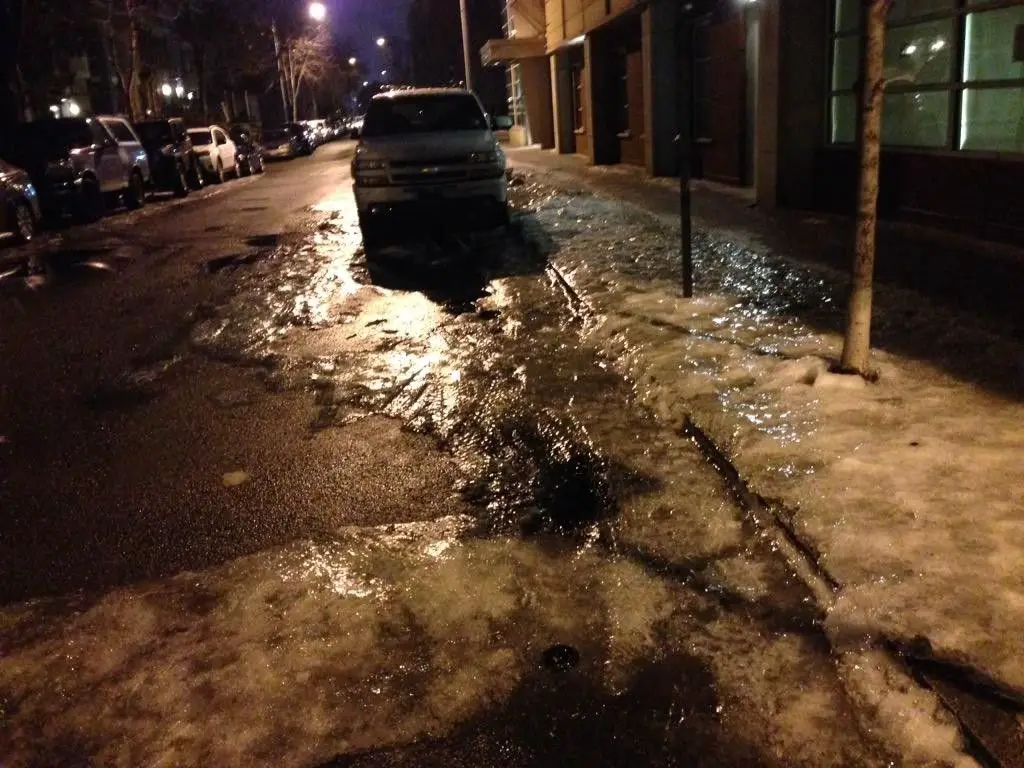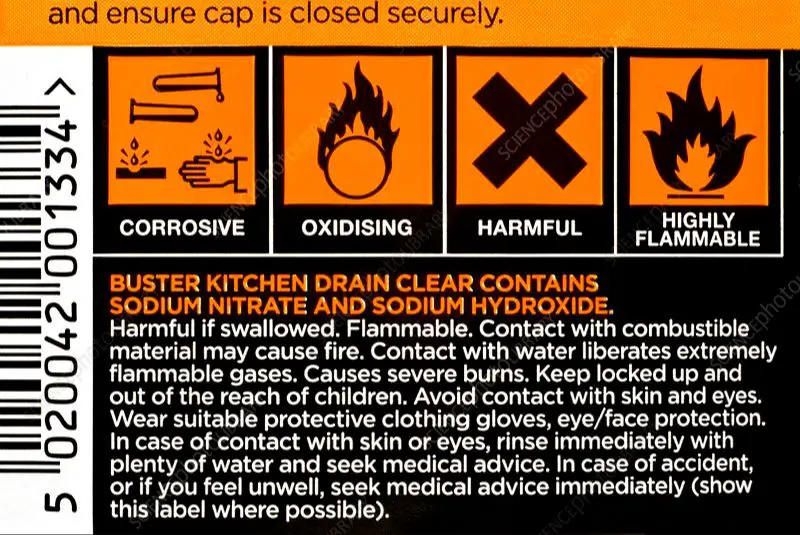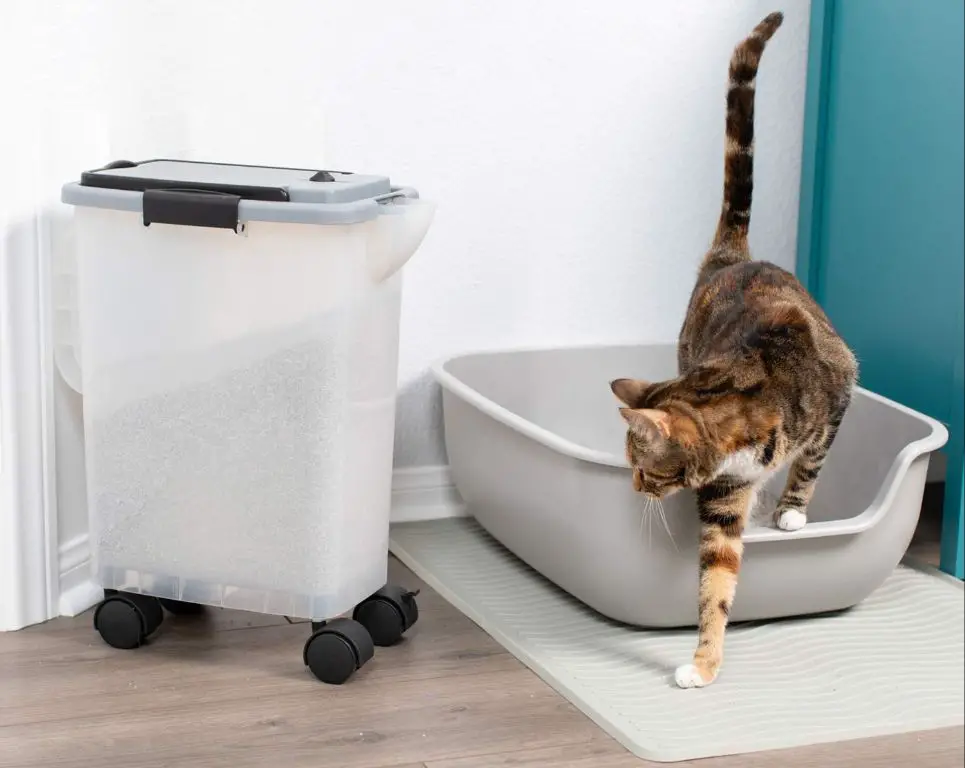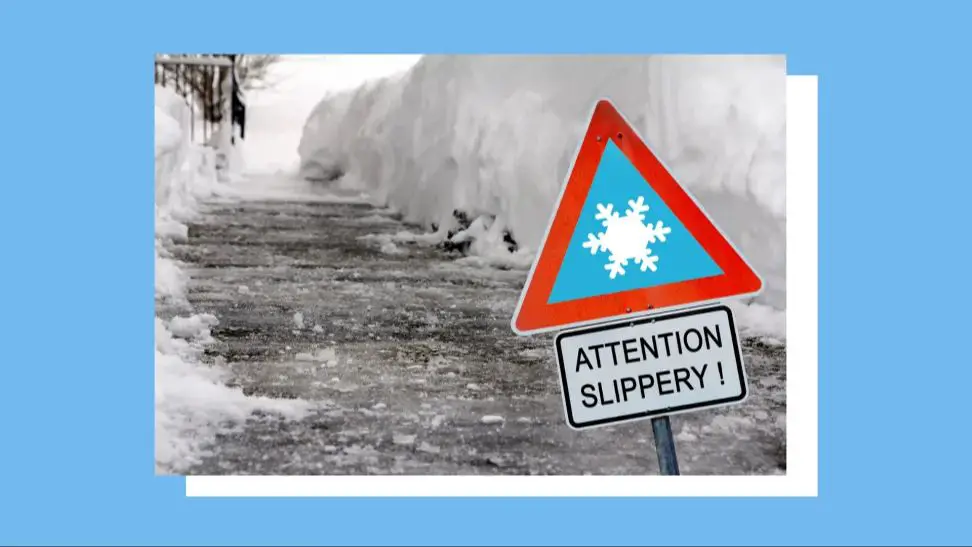Winter weather can create dangerous icy conditions on roads, sidewalks, and driveways. While salt is commonly used to melt ice, an alternative option is using cat litter. The granular texture of cat litter provides traction on icy surfaces, helping improve safety and prevent slips and falls. Though not as effective at melting ice as salt, cat litter can be a cheaper, more environmentally friendly option for providing traction. This content will examine using cat litter to melt ice, including its effectiveness, proper application, potential risks, and best practices for storage and disposal.
How Cat Litter Helps Melt Ice
Cat litter can provide traction on icy surfaces because of its granular texture, but it does not actually melt ice (Source). The clay and silica gel in standard clay and clumping cat litter are highly absorbent materials. When sprinkled onto icy surfaces, they can draw moisture away from the ice through absorption. This may give the appearance of “melting” the ice. However, cat litter only absorbs water – it does not contain any ice-melting agents like calcium chloride or magnesium chloride.
Effectiveness Compared to Salt
Kitty litter can be an effective alternative to traditional salt for melting ice, but it typically works more slowly. The granules in kitty litter provide traction which helps prevent slips and falls, but they don’t melt ice down as quickly as salt or other chemical deicers (Reviewed, 2022). This is because kitty litter lacks the same ice-melting compounds like sodium chloride that are found in typical ice melting products.
While kitty litter may take longer to melt through ice, it is generally considered less harmful to the environment. Salt runoff can damage plants, lead to erosion, and contaminate groundwater. Kitty litter is more inert and does not have these same risks of pollution or soil damage. However, some types of clumping litter contain bentonite clay which could potentially clog drains when melting (CBC News, 2017). Overall, kitty litter takes a more gentle approach compared to salt but patience is required for it to work.
Application Tips
When using cat litter to melt ice, it’s important to apply it properly for maximum effectiveness. Experts recommend spreading it evenly in a thin layer across icy surfaces. Applying too much at once can lead to waste and won’t be any more effective at melting ice. A light dusting of around 1/4 inch is ideal. Reapply as needed, especially after snowfall or freezing rain.

For sidewalks and driveways, sprinkle cat litter across the entire icy area. Target problem spots that tend to become especially slick. On steps and walkways, pay extra attention to high traffic areas and anywhere traction may be compromised. Applying cat litter to these zones can help prevent slips and falls.
It’s also helpful to reapply cat litter a few times throughout the day in frigid conditions where ice keeps reforming. Regular reapplication ensures continued traction and ice melting on the surface. Just sweep off any excess slush and sprinkle a fresh layer. With the proper coverage and reapplication, cat litter can be highly effective at promoting safety and accessibility.
Dangers and Risks
While using cat litter to melt ice may seem like a convenient and eco-friendly solution, there are some risks to be aware of. One major concern is that cat litter can clog drains when washed away by melting ice or rainwater (Gaia Enterprises). The clay clumps tend to get stuck in storm drains, leading to backups and flooding. Municipalities often warn against using cat litter on driveways or sidewalks for this reason.

Additionally, cat litter becomes far less effective once it gets wet (Traction Magic). The clay clumps will start to break down and dissolve when exposed to moisture from melting ice. This renders it unable to provide traction or keep melting ice. It’s important to clean up wet cat litter right away and replace it with fresh, dry litter for the best results.
Some types of cat litter also contain chemicals that could be harmful if ingested by pets or wildlife attracted to the scent. It’s best to choose a natural, chemical-free litter if using it for ice traction. Overall, proper storage and cleanup is essential to avoid the risks of clogged drains and diminished effectiveness when using cat litter to melt ice.
Alternative Options
While cat litter can be an effective ice melt, there are some other common household items that can also provide traction on icy surfaces (Safe Paw, 2021):
- Sand – A sandy mixture provides grip and melts ice through abrasion. Use a coarse builder’s or play sand. Avoid using super fine sand like beach sand.
- Wood ash – The alkalinity helps melt ice. Ensure the ashes have cooled completely before spreading.
- Bird seed – The kernels create temporary traction. Scatter sparsely and avoid using salted seeds.
These alternatives may be more environmentally friendly and gentle on surfaces. However, cat litter absorbs more water and provides better melting power. Test different materials to find the right balance of availability, effectiveness and safety for your situation.
Best Types of Cat Litter
When using cat litter to melt ice, the two best types are clay and silica gel litters:
Clay litter – Clay litters are very effective at providing traction on ice. The clay absorbs moisture, which helps melt the ice through friction. Look for non-clumping clay litter, as the clumping kind will turn to mud when wet. The clay granules provide grip even once saturated.
Silica gel litter – This type of crystal cat litter is highly absorbent, soaking up water and melting ice quickly. It provides great traction and doesn’t get muddy. Silica gel litters are lightweight and easy to spread. Just be aware that this litter can be harmful if ingested.
Both clay and silica gel cat litters work well sprinkled lightly on icy patches. The granules create friction to melt the ice while providing grip underfoot or tire traction. Avoid clumping clay or other lightweight litters that will turn into a muddy mess.
Storing and Disposing
When storing cat litter for ice melting purposes, it’s best to keep it in a sealed bucket to prevent spills. According to a Reddit user, used kitty litter can be saved in a bucket and kept in the car during winter months to provide traction on icy spots (source). The bucket containment prevents loose litter from spreading and contains odors.

When it comes time to dispose of the used cat litter, it’s important not to dump it down drains. The clumping variety especially can clog pipes and sewer systems. Instead, bag up the used litter and put it in the regular trash for collection (source). This avoids potential plumbing issues while properly containing waste.
Case Studies
Cat litter has been successfully used to provide traction on icy surfaces in a variety of situations:
The grounds crew for the Philadelphia Eagles football team sprinkled cat litter on the icy steps and walkways outside Lincoln Financial Field before a big game, allowing fans to access the stadium safely (https://www.urbandumpsterrental.com/can-you-use-cat-litter-for-ice/).
Many homeowners report sprinkling cat litter on their icy driveways and walkways to create temporary traction so they can walk to their cars safely. The cat litter provides grip long enough to walk across the ice without slipping (https://www.bobvila.com/articles/best-ice-melt/).
The groundskeeping staff at Cornell University uses cat litter to manage icy walkways on campus during winter. They find it creates enough temporary traction to allow students to walk safely until the walkways can be fully cleared of ice and snow (https://www.urbandumpsterrental.com/can-you-use-cat-litter-for-ice/).
Conclusion

In conclusion, cat litter can be an effective way to melt ice and snow in certain situations. The dust, clay, and sand in clumping or non-clumping cat litter provides abrasion that can help break down ice and provide improved traction. When spread carefully on walkways, driveways, or other icy surfaces, cat litter can provide an alternative to salt.
However, it’s important to use caution and moderate amounts of cat litter, as overapplication can harm pets’ paws or negatively impact plants or waterways. Consider testing a small area first. While not as fast-acting as salt, cat litter can supplement your ice melting toolkit. When stored properly and cleaned up afterwards, cat litter can be a handy item to have on hand for occasional ice melting needs.
In summary, cat litter can help melt ice and provide traction, but exercise care in its application. Use it strategically as part of your winter ice management plan.

